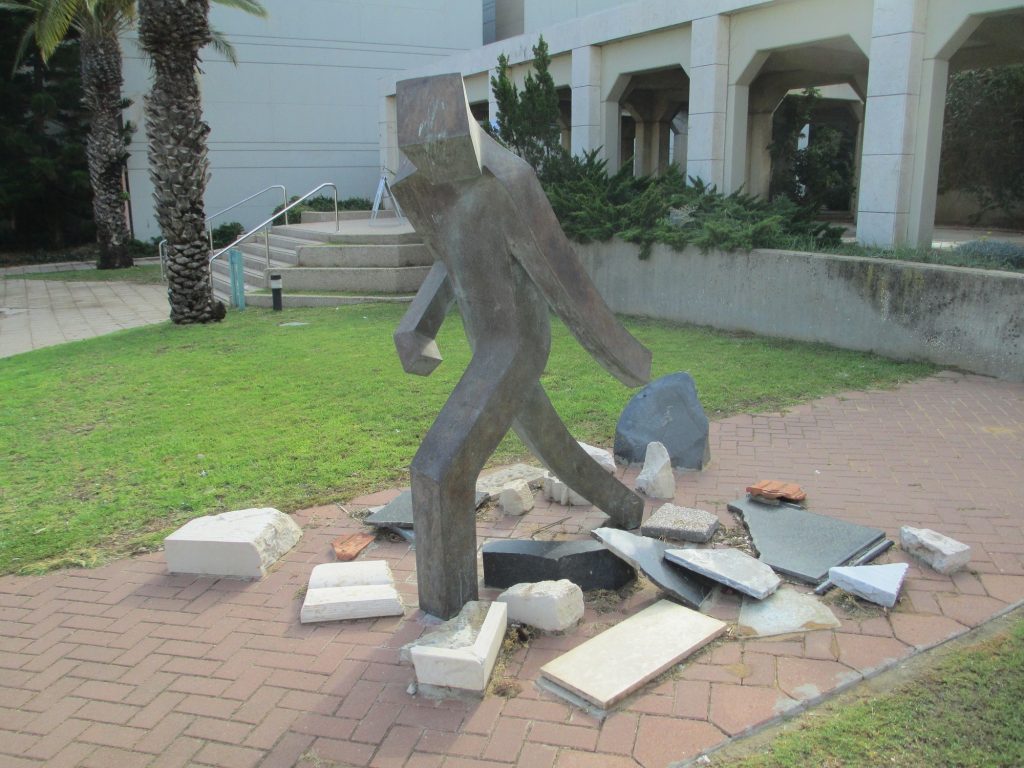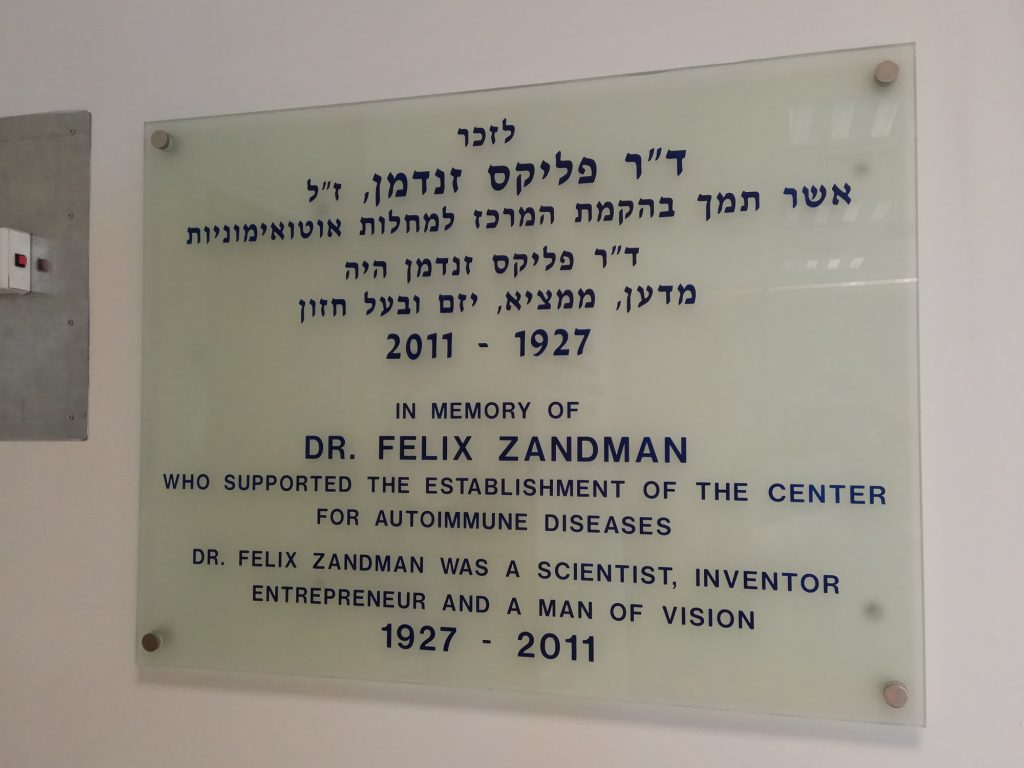13 years have elapsed since Dr. Felix Zandman passed away, but his story continues to resonate. There are innumerable accounts about the Holocaust, as well as a host of stories dealing with the Holocaust and rebirth. But the unbelievable story of Felix Zandman is truly extraordinary and beautiful because it embodies a victory against all odds, the importance of education and knowledge, a moving plot about friendship, mutual assistance, and readiness to sacrifice for others – in addition to miracles and wonders.
Zandman is also the epitome of a rare human combination: a scientist with a remarkable entrepreneurial spirit, who managed to turn his inventions into a billion-dollar enterprise, while maintaining an ideological rhetoric of the rebirth of the Jewish people in their land.

With several registered patents under his belt as early as the 1950’s, coupled with a willingness to take business risks, Zandman built a global electronics empire. But achieving business success wasn’t necessarily his highest aspiration. As he put it – he merely wanted to be an engineer. However, because no one agreed to invest in his inventions, he decided to start a business and do it on his own. The company that he founded – Vishay Intertechnology – has for years been one of the leading manufacturers of electronic components worldwide.
Zandman’s story begins in the town of Grodno – which at the time was part of Poland and is now in Belarus. The majority of its Jewish residents were murdered in the Holocaust. Felix, who was born into a well-to-do family in 1927, managed to dodge the Nazis repeatedly, against all odds, even though most of his family members did not survive. In 1941, when he was 14, Felix and his entire family were sent to the Grodno ghetto – his grandmothers and grandfathers on both sides, his parents, Aaron and Genia, and his seven-year-old sister, Mira. After the ghetto was sealed off in November 1941, Felix’s mother decided to try and escape with her children. She begged her husband to run away with them, but he refused to leave his parents behind. Felix, Genia and Mira managed to hide for a few days, but his mother could not bear being apart from his father, so they returned to the ghetto. Felix and his family remained in the ghetto until November 1942, when there was a mass deportation of Jews to Treblinka. Members of his family, who until then had fought to stay together, were also deported. Felix and his mother’s brother were working as forced laborers outside the ghetto when it was liquidated, and for that reason became separated from the rest of the family. A small group that included Felix, his uncle, Sender Frejdowicz, and three other Jews, seized the moment and fled for their lives. They ended up in a tiny hole, 1.5 meters wide and 1.5 meters long, where they hid for 17 months.

That hole was dug beneath the floorboards in a house where a Polish couple, Jan and Anna Puchalski, lived with their five children. Before the war, Anna had worked for the Zandmans, who treated her like one of their own. Anna, who remembered their kindness, was prepared to risk her own life and that of her family. Jan and Anna Puchalski and three of their daughters, who were teens during the war, were later bestowed the title of Righteous Among the Nations in recognition of their heroism.
A more detailed description of the period that Felix and the others spent in that hole appears in his autobiography, Never the Last Journey. Haim Hecht also made a documentary about Zandman in 2006, entitled The Final Victory, which can be found on the Internet.
In order to make the film, Hecht accompanied Zandman to places and sites that had shaped his life, and interviewed him in different locations around the world. Needless to say, one of those interviews was conducted while standing in the cold outside the house where Felix hid as a young boy. The film also recounts other victories that he achieved, the incredible way he managed, time and time again, to escape by the skin of his teeth from the Nazi murderers, and his rise to greatness in the world of science and business.

During the long and difficult months of hiding in that dark and tiny hole, Zandman never stopped acquiring knowledge. His uncle, who was an engineer, taught him math, geometry and physics, and Felix, the brilliant student, remembered everything. After surviving the war, the two left for Paris as soon as they could, where young Felix embarked on a new life in the free world of post-World War II. He studied physics and mechanical engineering at the University of Nancy, which some years later named him Student of the Century – and from there went on to earn a PhD degree in physics from the Sorbonne.
After completing his studies, Zandman began working as an engineer and then emigrated to the United States. His head was full of ideas about how to upgrade the smallest electronic components and make them much more efficient. In the 1950’s, he registered a number of patents for inventions that would in the future revolutionize the electronics industry. The small and sophisticated components that Zandman developed would later solve very big problems for a wealth of industries, ranging from the machinery and automotive industries to the aerospace industry.
Unable to find investors for his inventions, Zandman took out a $4,000 loan and founded Vishay Intertechnology, with headquarters in the United States. For those who wish to know, Vishay is the Yiddish pronunciation of the village where his grandmother was born. No Jews were left in that village following the Holocaust.
Commemoration was always important to Zandman. Apart from naming the company he founded after the village where his grandmother was born, he was also a major donor to Yad Vashem. His contributions include the Family Plaza and a sculpture by Menashe Kadishman that stands in the middle of it. The sculpture commemorates his grandfather, who was killed in the Holocaust together with two of his grandchildren and another Jewish baby. Tears were streaming down Zandman’s face when he described how his grandfather remained in the main section of the house with the small children and the baby, while the other adults were hiding in the attic. The family could not take the children with them into their hiding place for fear that they would cry and expose everyone else when the Nazis came looking for them. But Zandman’s grandfather refused to leave the little ones alone inside the house and preferred to wait with them until the Nazis showed up, and that in fact happened.
Even though he didn’t live in Israel, Zandman spoke fluent Hebrew and did a lot for the country. In the 1980’s, when he wanted to open an electronics factory in Dimona, many felt that it was just another pipe dream of an impractical genius, and they looked at him as if he were crazy – and not for the first time in his life. But Shimon Peres, who at the time was Prime Minister, believed in him. “I looked at Felix and his biography, and thought: this is our history,” Peres later said when interviewed for The Final Victory. “That’s why I never had any doubt that this man could manufacture the most important Israeli product, miracles.”
Zandman devoted the latter decades of his life to growing and expanding his business, including buying other companies. The Polish-Jewish Holocaust survivor became a prosperous American industrialist who received the Electronic Industries Alliance Medal of Honor, awarded in the presence of President George W. Bush. From Zandman’s perspective, his most important business achievement was the acquisition of Telefunken, the German electronics company. He was proud of the fact that a Holocaust survivor had bought a company which in the past had served Nazi Germany and the Wehrmacht during the war.
More than a decade after his death, Zandman’s company continues to thrive. At the end of 2022, it had 23,900 full-time employees, who work out of factories located across the globe, including some in Israel. The company is currently valued at $3.36 billion. Felix Zandman may no longer be with us, but his son, Marc Zandman, is following in his footsteps. Marc is the president of Vishay Israel, and also holds key management positions in the global corporation.
Felix Zandman’s motto was that you can strip a person of everything, but the good deeds he did for others cannot be taken from him – those are his, even after his death. He measured his business success by the number of people he gave jobs to, and was proud of the fact that he chose to eat in the employee dining room and not in expensive restaurants. Zandman’s greatest satisfaction came from his contribution to Israel’s security. Among other things, he helped increase the precision of the turrets installed on Israeli Merkava tanks – one of the IDF’s major sources of pride. Use of that invention continues to be made during Operation Swords of Iron.
Zandman was married twice and had three children from his first wife. His eldest daughter is Prof. Gisele Zandman-Goddard, a department head at the Wolfson Medical Center. Felix Zandman never lived in Israel for any extended period of time, but he visited the country frequently and made important contributions to it. In the end, at the age of 84, he was buried in its earth. May his memory be a blessing.